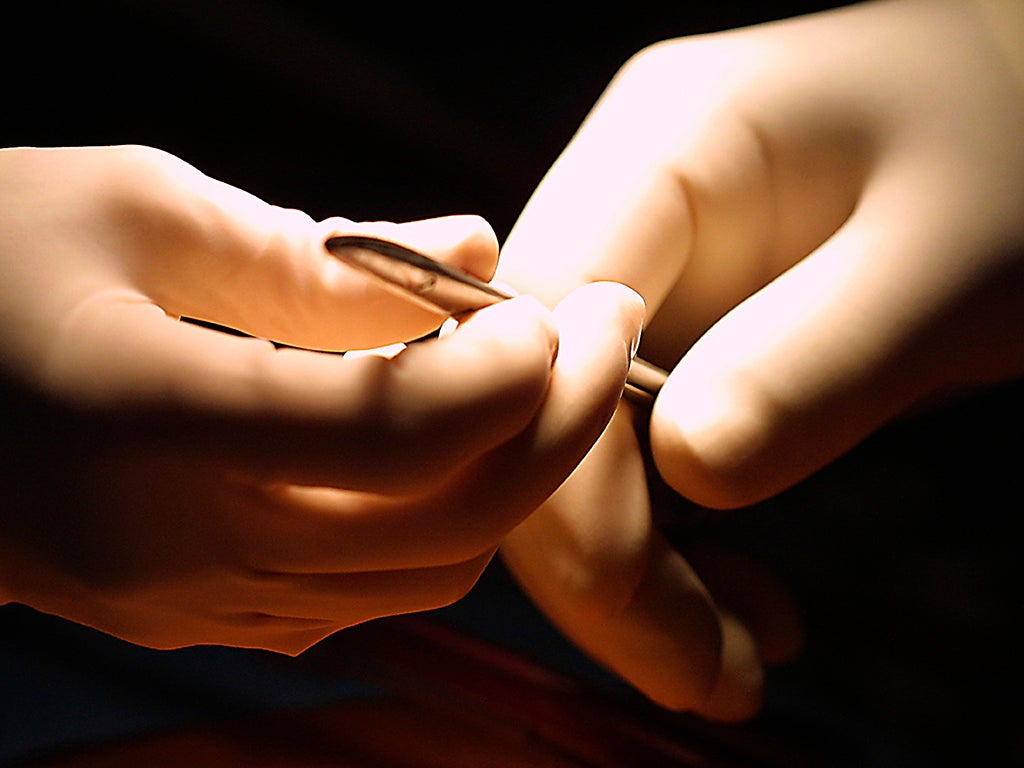Do you have trouble telling left from right? Here's when it's a problem
Some of the most tragic errors in medicine have been when surgery was performed on the wrong side of a patient: removing the wrong kidney or amputating the wrong leg

Your support helps us to tell the story
From reproductive rights to climate change to Big Tech, The Independent is on the ground when the story is developing. Whether it's investigating the financials of Elon Musk's pro-Trump PAC or producing our latest documentary, 'The A Word', which shines a light on the American women fighting for reproductive rights, we know how important it is to parse out the facts from the messaging.
At such a critical moment in US history, we need reporters on the ground. Your donation allows us to keep sending journalists to speak to both sides of the story.
The Independent is trusted by Americans across the entire political spectrum. And unlike many other quality news outlets, we choose not to lock Americans out of our reporting and analysis with paywalls. We believe quality journalism should be available to everyone, paid for by those who can afford it.
Your support makes all the difference.Do you ever have difficulty telling right from left? For example, you’re taking a driving lesson and the instructor asks you to take a left turn and you pause, struggling to think of which way is left. If so, you’re not on your own – a significant proportion of our population has difficulty in telling right from left.
Left-right discrimination is a complex neuro-psychological process involving several higher neurological functions, such as the ability to integrate sensory and visual information, language function and memory. For some it is second nature but for others a considerable challenge. You can take a test here to see how well you do.
One further problem facing the health profession is that when a doctor or nurse faces a patient, their right-side is on the patient’s left-side. So correctly distinguishing right from left in a patient also involves the visuo-spatial function of mentally rotating images.
Wrong turns to avoidable errors
It’s hardly the end of the world if you take the wrong direction on a journey, but there are many situations where confusing right from left can have devastating consequences. Some of the most tragic errors in medicine have been when surgery was performed on the wrong side of a patient: removing the wrong kidney or amputating the wrong leg. While there are systems, checks and balances in place to anticipate and minimise these kinds of mistakes, when they do occur, human error is often at the root of the cause.
Error is an inherent characteristic of human behaviour – sometimes we just get things wrong – but left-right ones may be more than a one-off accident. Evidence would suggest that right-left confusion is more common in women. The literature would appear to suggest that men demonstrate a greater degree of visuo-spatial function.
The ‘distraction effect’
Distinguishing right from left also never occurs in isolation. Hospitals and other health settings are busy and complex places to work in. Doctors are often subject to distractions while working; receiving telephone calls, cardiac monitors bleeping, taking questions from colleagues, patients and their relatives – the clinical environment can be very challenging.
In research we published in Medical Education, we explored the impact of such interruptions on medical students’ ability to correctly discriminate right from left. While objectively measuring 234 medical students' ability to distinguish right from left, we subjected them to the typical ambient noise of a ward environment and interrupted them with clinical questions.
Our findings were startling. Even the background noise of a ward environment was enough to throw some medical students off when making right-left judgements. Asking them a series of questions while they were trying to distinguish right from left had an even greater impact. The “distraction effect” was greater for older and female students.
An individual’s ability to self-determine how well they could distinguish right from left was also often imprecise. So many students thought they were good at distinguishing right from left when, objectively measured, they weren’t.
Counter techniques
Those who have difficulty in telling right from left often develop their own techniques – for example placing their left thumb at right angles to their index finger to make an “L” representation for their “left” side. It appears however that these techniques remain fallible and fail to combat this issue in all cases.
In healthcare, training – starting at an undergraduate level – needs to make students mindful of the challenges of making right-left decisions and the impact that distractions can have on such critical decisions. We need to develop strategies to reduce such error-provoking situations and to raise student and teacher awareness of the fact that some individuals are more prone to right-left confusion.
As the people at risk often don’t think they have a problem, testing of the ability to discriminate against right-left discrimination – for example through online psychometric tests – could be offered to students to measure their ability. Those who are revealed to be challenged in making right-left decisions, would at least have this deficiency flagged up and could apply extra vigilance in certain situations.
Minimising distractions is also particularly important. During the critical phases of a flight, pilots must refrain from all non-essential conversation to avoid unnecessary distractions. Such cockpit rules, and other strategies lend themselves well to healthcare.
Gerard Gormley is Senior Academic General Practitioner at the School of Medicine, Dentistry and Biomedical Sciences, Queen's University Belfast
This article was originally published on The Conversation. Read the original article.
Join our commenting forum
Join thought-provoking conversations, follow other Independent readers and see their replies
Comments